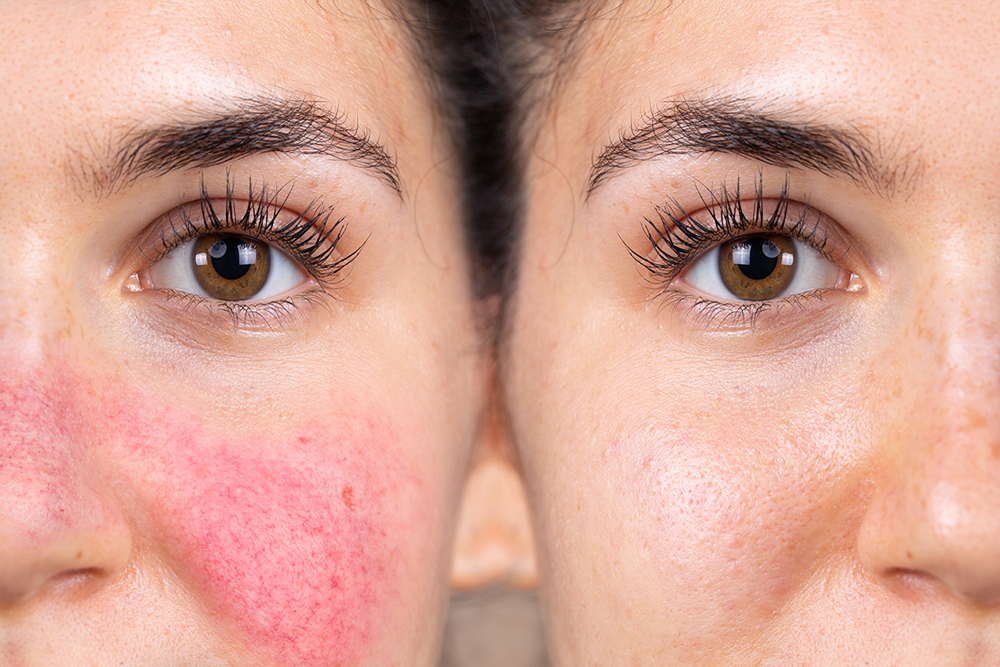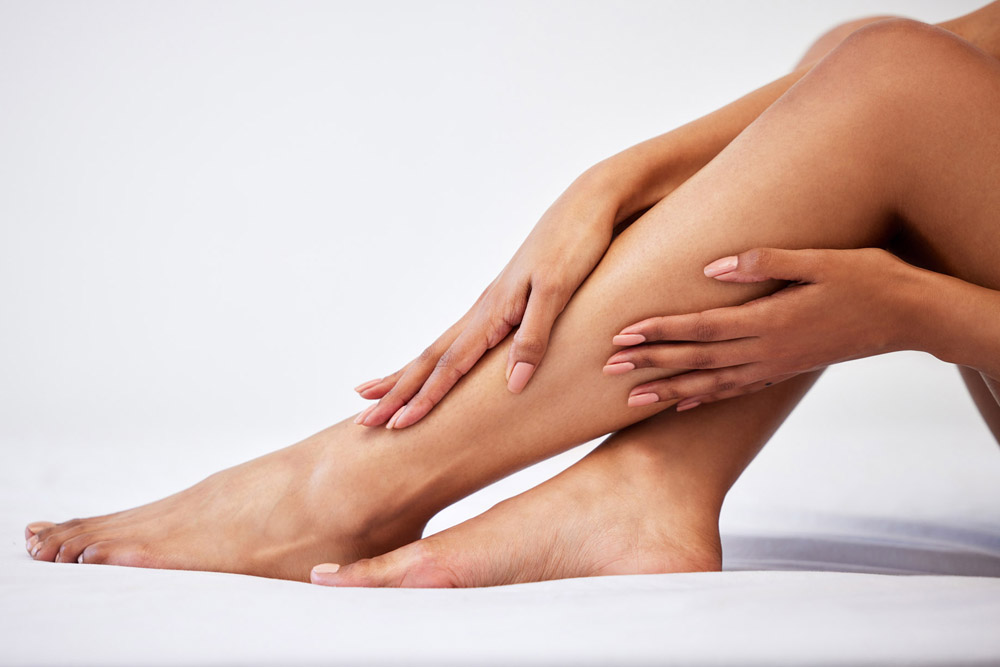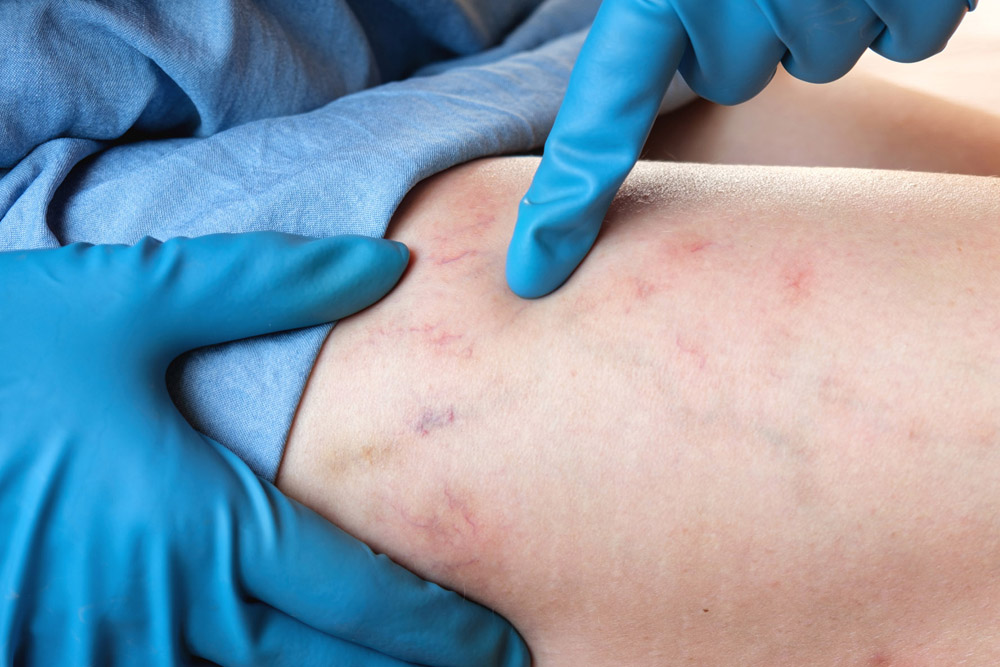Sclerotherapy is a leading, minimally invasive treatment for spider and varicose veins, offering clear, healthier-looking legs with a fast recovery. Our clinic specializes in using advanced techniques to provide effective results and maximum patient comfort.

Sclerotherapy is a minimally invasive procedure used for treating varicose and spider veins. It involves injecting a solution into the veins, causing them to collapse and fade. Wondering "Is sclerotherapy safe?" This procedure is generally safe when performed by a qualified professional, but it’s important to be aware of potential side effects. Common side effects include temporary pain, swelling, and skin discoloration. More serious side effects, like blood clots, are rare.

Patients often ask about the "side effects of sclerotherapy." It's essential to understand that while side effects are typically mild, they can include itching, bruising, and in rare cases, ulcers or allergic reactions. Always discuss these risks with your doctor. Before undergoing sclerotherapy, patients should follow specific guidelines to ensure optimal results. This includes understanding "what to do before sclerotherapy," such as avoiding certain medications and following pre-procedure instructions provided by your healthcare provider.

Sclerotherapy for veins is highly effective, especially for spider veins and varicose veins. Many patients see significant improvement in both appearance and discomfort.
Another common query is "Is sclerotherapy covered by insurance?" Generally, insurance covers sclerotherapy for varicose veins if medically necessary, but coverage for spider veins may vary. Check with your provider for specific details.

After spider vein treatment, patients should adhere to post-procedure care instructions to ensure the best results. This includes wearing compression garments and avoiding heavy exercise.
Sclerotherapy benefits go beyond cosmetic improvements, offering relief from symptoms like pain and swelling associated with varicose veins. Understanding "how effective is sclerotherapy" can help in making informed decisions about your treatment.

Our clinic offers a range of sclerotherapy options, ensuring personalized treatment plans for each patient. Whether you're dealing with varicose veins or looking into "sclerotherapy for spider veins," our experts are here to help. We also use various sclerotherapy agents tailored to individual needs, ensuring safe and effective results. For those concerned about "sclerotherapy medication," rest assured that our procedures are performed with the highest standards of care.
Ready to Begin Your Journey to Healthier Legs? Contact us today to schedule a consultation and learn more about how sclerotherapy can help you achieve clear, beautiful skin free from spider veins.
Sclerotherapy is a medical procedure and a proven method of eliminating any diseased and unsightly veins.
This treatment has been recognized as a very valuable and effective method of therapy for spider and varicose veins. Huge demand for such a procedure has helped the development of new sclerotherapy agents as well as an understanding of venous pathology.
Like any other skill, it requires knowledge, training, experience from performing it physicians and nurses.
They pay huge attention to applying individualized techniques, always having their patients’ health and comfort at their utmost diligence.
There are many possible and very often overlying causes:
The procedure:
Prior to sclerotherapy everybody should have an initial consultation with a vascular medicine specialist.
The specialist will be able to determine the extent of a vein problem and the best treatment modality to be used.
The eligibility for sclerotherapy will be decided on an individual basis.
Contraindications for sclerotherapy include:
Sclerotherapy is considered a safe procedure.
It involves an injection of a special medication, through a very thin needle, to an affected vein. The medication, also called sclerosant, irritates and dissolves the inner wall of the vein. The wall disintegrates releasing clotting agents and collapses. The vein disappears over time.
The procedure does not require an anesthetic if done by a skilled specialist.
Treatment takes approximately 20 – 30 minutes. Patients rest comfortably on the examination table and are fully awake.
Most often, patients require more than one sclerotherapy sessions.
Institute for Vein Health uses only FDA approved sclerosant agents and only from FDA approved manufacturers.
Prior your treatment:
For your comfort, the Institute for Vein Health can provide you with any compression garment.
Side effects are rare.
Sclerotherapy is a safe procedure and the listed side effects have been reported in the vascular literature as infrequent.
Compression stocking or socks are applied immediately after sclerotherapy. Patients should keep them on during the first night after procedure and then wear them daily for the next seven days. The compression has been proven to markedly diminish possible side effects.
Patients can drive themselves home and resume daily activities.
Walking is encouraged.
Activities to avoid for at least 48 hours after treatment:
It is unreasonable to agree with a claim that sclerotherapy does not work.
I have never encountered even one patient who would have not benefitted from that very simple procedure. Multiple studies have shown that each sclerotherapy session eliminates as many as 50%-60% of treated veins. Although less than 10% of patients have very minimal response to treatment, majority of them are happy with the achieved results.
Treated veins will never reappear. However, new veins may appear in the future and will require further sclerotherapy.
Medical insurances pay only for medically necessary sclerotherapy and only if their plans have the treatment listed as a covered benefit.
Insurances do not pay for cosmetic sclerotherapy.
Nevertheless, it is for the vein specialist to determine if a required sclerotherapy may meet the criteria for insurance reimbursement. What may seem as a cosmetic problem on the surface still can have a deeper, sometimes dangerous source underneath the skin.
Always discuss all your concerns with a doctor to establish the nature of your problem and medical necessity for treatment.